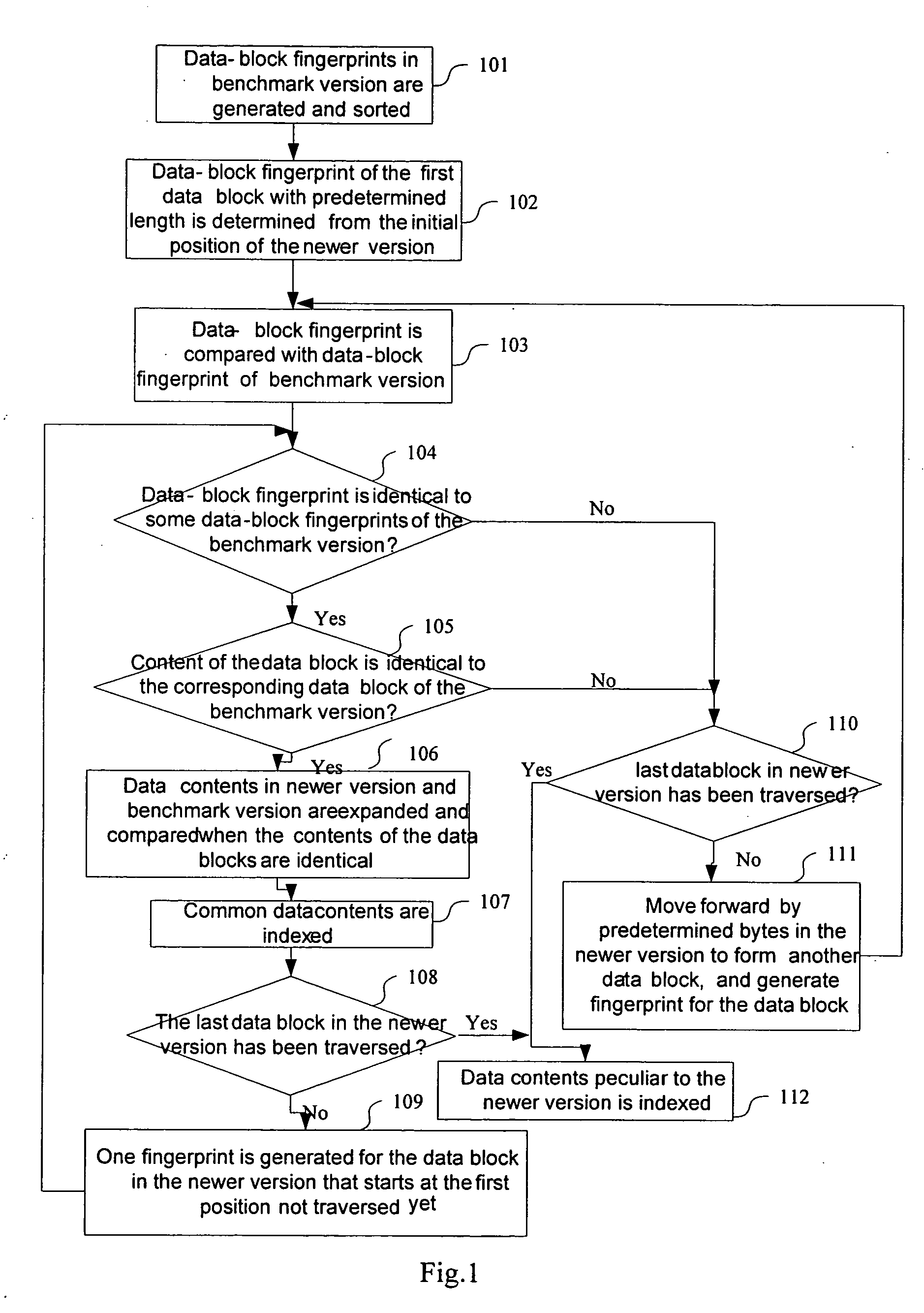Multi-version control method for data documents and device thereof
- Summary
- Abstract
- Description
- Claims
- Application Information
AI Technical Summary
Benefits of technology
Problems solved by technology
Method used
Image
Examples
Embodiment Construction
[0035]In the present invention, data documents are differentiated into a benchmark version and some newer versions. Data contents common between the newer versions and the benchmark version, and those peculiar to the newer versions are determined according to the scheme provided by the present invention, so as to implement a control to a multi-version data document. The process comprises: the data-block fingerprints of the data blocks in the benchmark version are generated; data contents in the newer versions that are the same as some data contents in the benchmark version are determined according to the data-block fingerprints; and the common data contents are indexed; each of the indexes comprises length of the common data contents and respective locations of the common data contents in the benchmark version and the newer versions. Data contents peculiar to the newer versions, i.e. not contained in the benchmark version are determined according to the indexes, and these data conte...
PUM
 Login to View More
Login to View More Abstract
Description
Claims
Application Information
 Login to View More
Login to View More - R&D
- Intellectual Property
- Life Sciences
- Materials
- Tech Scout
- Unparalleled Data Quality
- Higher Quality Content
- 60% Fewer Hallucinations
Browse by: Latest US Patents, China's latest patents, Technical Efficacy Thesaurus, Application Domain, Technology Topic, Popular Technical Reports.
© 2025 PatSnap. All rights reserved.Legal|Privacy policy|Modern Slavery Act Transparency Statement|Sitemap|About US| Contact US: help@patsnap.com



